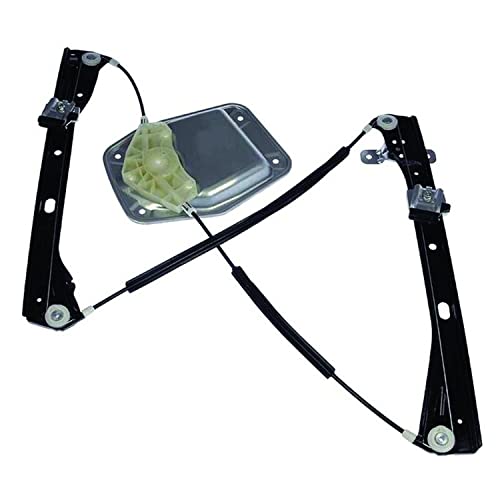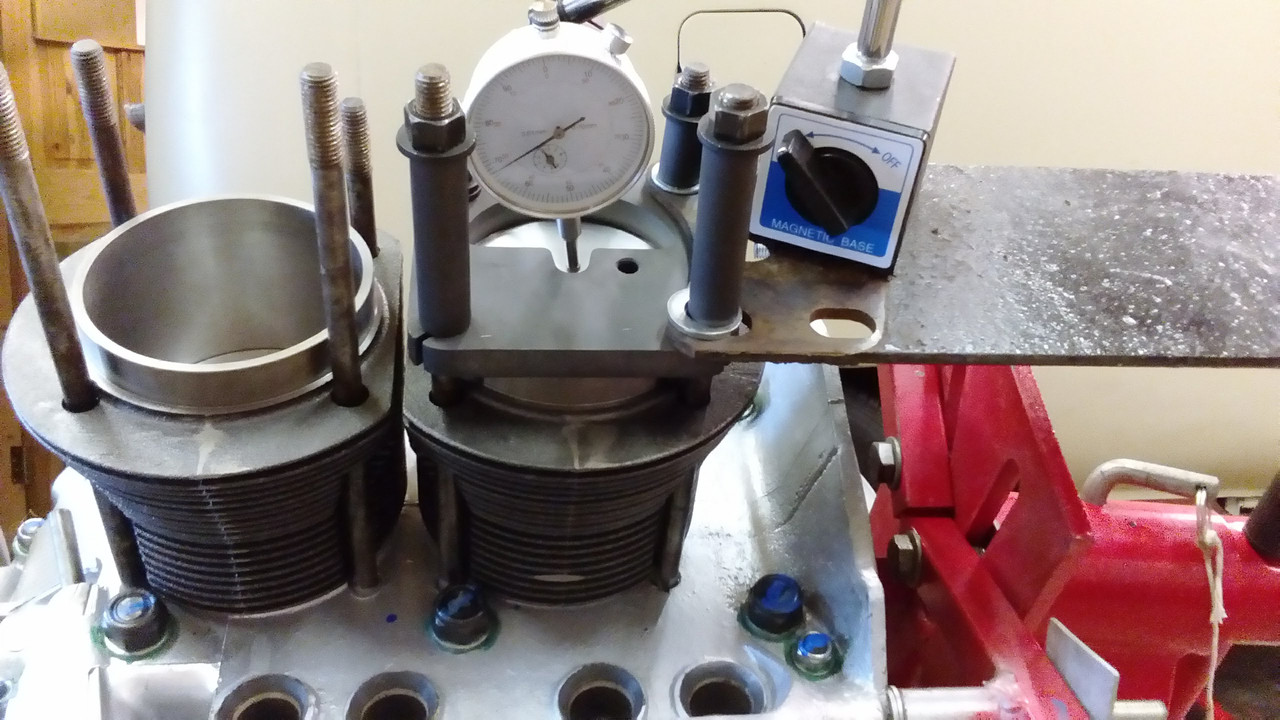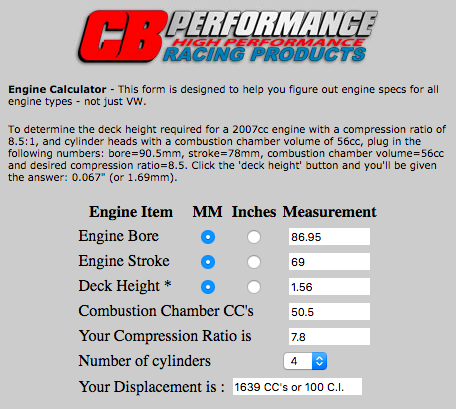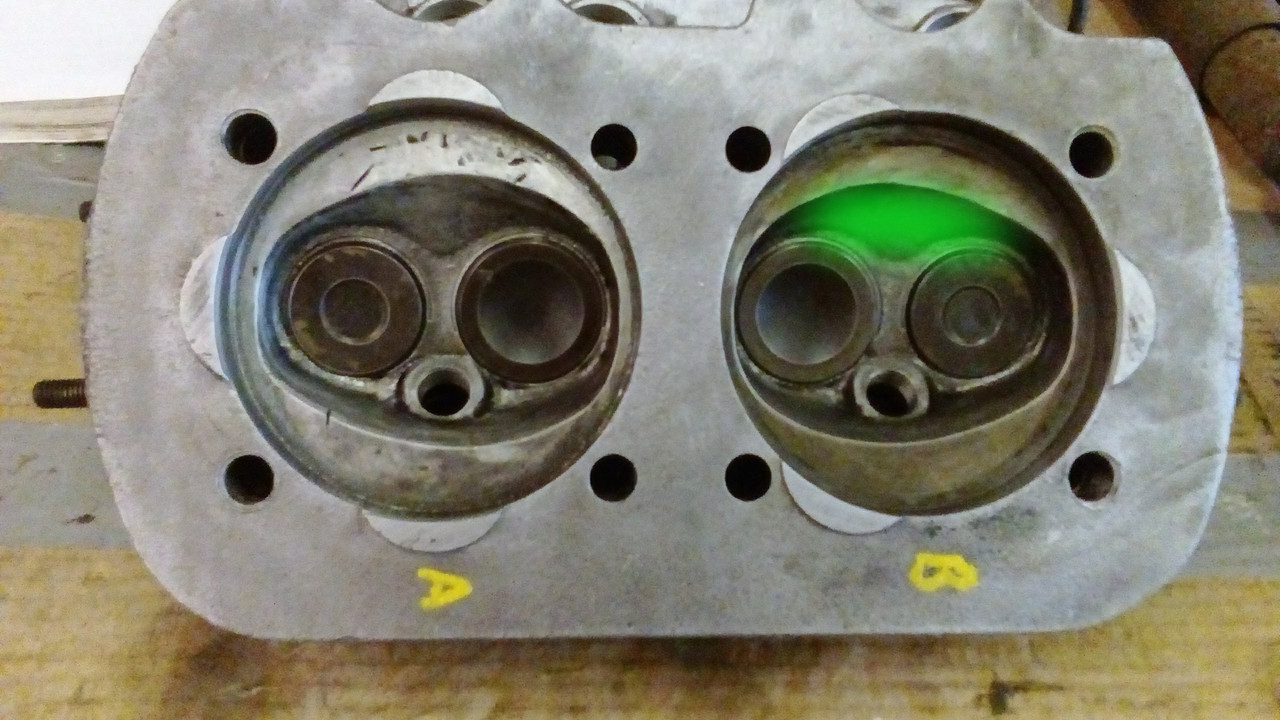cunning plan
Well-known member
- Joined
- Jul 15, 2008
- Messages
- 2,625
- Reaction score
- 1
- Location
- Northamptonshire
- Year of Your Van(s)
- 1968
- Van Type
- Clipper / Microbus
So I have measured deck height and I have values of:
Cylinder 1: Deck Height: 1.86mm - Compression Ratio: 7.7:1
Cylinder 2: Deck Height: 1.85mm - Compression Ratio: 7.7:1
Cylinder 3: Deck Height: 1.85mm - Compression Ratio: 7.7:1
Cylinder 4: Deck Height: 2.01mm - Compression Ratio: 7.6:1
So Cylinder 4 seems to be the odd one with 2.01mm and a 7.6:1 compression ratio.
Two questions.
Firstly, I want this engine to be a little lazy and not over-stressed as I want to try and make it as reliable as possible. So I was thinking of running below 7.5:1 compression, perhaps 7:2/7:3.
Is this too low, should I aim for 7.5 or leave it at 7.7, or is 7.7 too high?
Second question, is the difference in Cylinder 4 a big problem? I presume you would want them all to be as close as possible? I am using an old case with an unknown history to build this engine and a new AA 1641 kit.
If it is a problem, is it just a case of adding deck height using shims to the other three cylinders to match cylinder 4 - which seems sensible if I want to lower the compression ratio anyway, I certainly do not want to go higher, so hopefully no machining is involved to cut the case on cylinder 4 to match the other 3?
What do you all think?
:?: :roll: :| :| :|
:roll: :| :| :|
:sign0009:
Engine Specs:
All stock 1600 parts except:
1641 Barrels and pistons
Twin 40 IDFs
Electronic Ignition
Cylinder 1: Deck Height: 1.86mm - Compression Ratio: 7.7:1
Cylinder 2: Deck Height: 1.85mm - Compression Ratio: 7.7:1
Cylinder 3: Deck Height: 1.85mm - Compression Ratio: 7.7:1
Cylinder 4: Deck Height: 2.01mm - Compression Ratio: 7.6:1
So Cylinder 4 seems to be the odd one with 2.01mm and a 7.6:1 compression ratio.
Two questions.
Firstly, I want this engine to be a little lazy and not over-stressed as I want to try and make it as reliable as possible. So I was thinking of running below 7.5:1 compression, perhaps 7:2/7:3.
Is this too low, should I aim for 7.5 or leave it at 7.7, or is 7.7 too high?
Second question, is the difference in Cylinder 4 a big problem? I presume you would want them all to be as close as possible? I am using an old case with an unknown history to build this engine and a new AA 1641 kit.
If it is a problem, is it just a case of adding deck height using shims to the other three cylinders to match cylinder 4 - which seems sensible if I want to lower the compression ratio anyway, I certainly do not want to go higher, so hopefully no machining is involved to cut the case on cylinder 4 to match the other 3?
What do you all think?
:?:
:sign0009:
Engine Specs:
All stock 1600 parts except:
1641 Barrels and pistons
Twin 40 IDFs
Electronic Ignition
























